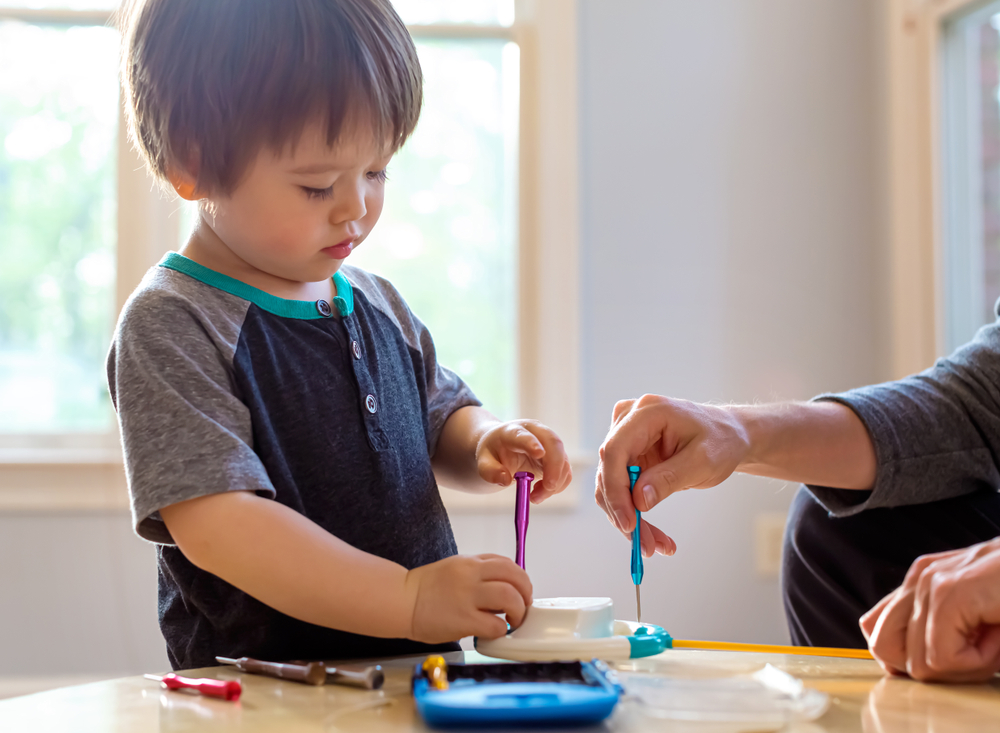In today’s world, STEM (Science, Technology, Engineering, and Math) is at the heart of education, shaping the minds of future innovators. But did you know that STEM learning can start as early as preschool? While it may seem like these concepts are complex, young children can engage in age-appropriate STEM activities that lay a strong foundation for future learning.
1. Science: Exploring the World Around Them
Young children are natural scientists. They ask questions, experiment, and observe the world around them. Encouraging curiosity and exploration at an early age helps develop the scientific thinking process.
Ideas for Early Science Learning:
- Nature Walks: Take children on nature walks where they can collect leaves, rocks, or flowers, and discuss their observations.
- Simple Experiments: Water experiments, like freezing and melting ice, help children understand cause and effect.
- Gardening: Planting seeds and observing growth is an easy way to teach about biology and ecosystems.
2. Technology: Building Digital Literacy
While it’s important to manage screen time, young children can still be introduced to basic technology concepts through play and interaction. Technology doesn’t always mean a screen; it can involve tools or simple machines that help children understand the world’s workings.
Ideas for Early Technology Learning:
- Interactive Learning Apps: Use educational apps that focus on basic shapes, numbers, and letters.
- Coding for Kids: Simple coding toys or games like building with blocks to follow a pattern or using a robot that follows commands can help teach basic problem-solving and sequencing.
- Educational Videos: Age-appropriate shows or online resources that demonstrate scientific principles in a fun, engaging way.
3. Engineering: Creating, Building, and Problem-Solving
Engineering teaches children how things are made and how they work. From building structures with blocks to figuring out how things fit together, children are constantly involved in engineering thinking. These hands-on experiences stimulate their problem-solving abilities.
Ideas for Early Engineering Learning:
- Building with Blocks: Simple toys like building blocks or Legos encourage spatial awareness, creativity, and understanding of structures.
- Simple Machines: Teach kids about levers, pulleys, and ramps using everyday items like spoons, boxes, and balls.
- Design Projects: Have children design a bridge with paper or create a “flying machine” using paper cups, straws, and tape.
4. Math: Numbers in Everyday Life
Math doesn’t always need worksheets or drills to be understood. Young children can start learning math concepts through play, routine, and exploration. Simple math concepts like counting, sorting, and measuring are all part of early childhood development.
Ideas for Early Math Learning:
- Counting Games: Use everyday objects like toys, fruits, or snacks to practice counting and understanding quantities.
- Shape Sorting: Use blocks, buttons, or puzzle pieces to help children recognize shapes and patterns.
- Measuring: Cooking with kids is a great way to introduce measurement concepts. Have them help measure ingredients for a recipe or explore concepts like “more” and “less.”
5. STEM Integration: The Power of Play
The beauty of STEM education for young children is that it often overlaps. A science experiment can involve technology, engineering, and math concepts simultaneously. For instance, building a rocket with blocks (engineering) and predicting how high it will fly (science), followed by counting the number of steps to retrieve it (math), all come together in one activity.
Ideas for Integrating STEM:
- STEM Play Kits: There are many ready-made STEM kits for young children, such as building toys, robots, and science experiment kits, designed specifically for preschoolers.
- STEM Storytelling: Read stories that involve problem-solving or inventions, and then encourage children to create their own inventions or solutions based on the story.
6. The Role of Educators and Parents in STEM Learning
Early exposure to STEM concepts is vital, and teachers and parents play an essential role in guiding and encouraging children’s exploration. The key is to focus on fostering curiosity rather than providing all the answers. Let them ask questions, try things out, and even make mistakes. This process is essential for building critical thinking and creativity.
Tips for Encouraging STEM at Home and School:
- Encourage Open-Ended Play: Give children the freedom to explore with open-ended materials like clay, fabric, or blocks.
- Ask Thoughtful Questions: Ask questions that stimulate curiosity, such as “What do you think will happen if we mix these colors?” or “How can we make the tower taller?”
- Celebrate Failure: In STEM, failure is just another step toward learning. Praise effort and perseverance, rather than just success.
STEM is for more than just older students – it’s something young children can experience and enjoy from the very start. By incorporating science, technology, engineering, and math into everyday activities, you help children develop the skills they’ll need in the future. Most importantly, fostering an early love for STEM can empower children to become curious, confident, and creative learners.
STEM for little ones is about making learning fun, interactive, and hands-on. Through simple activities, you can open their minds to the exciting world of discovery and innovation.
Ready to jumpstart your child’s STEM journey?
At I’m Just a Kid, we offer a nurturing environment where young learners explore, experiment, and grow through hands-on STEM activities. Contact us today to find out how we can help your child build a solid foundation for lifelong learning!
